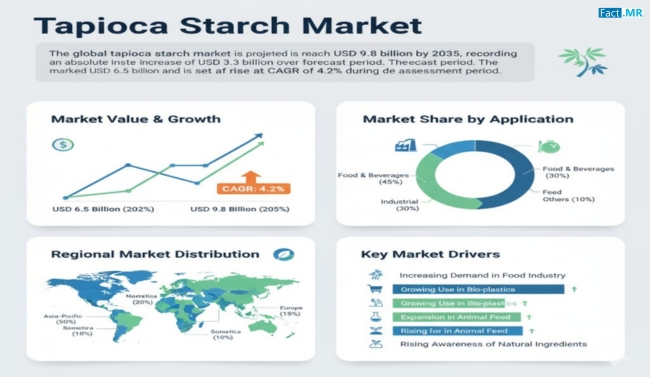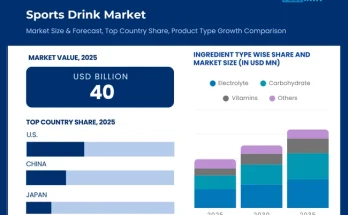The demand for clean label and natural food ingredients is transforming the global food industry. Tapioca starch, derived from cassava roots, is emerging as a versatile and sustainable ingredient with applications spanning food, beverages, pharmaceuticals, and industrial processes. Its natural properties, including high digestibility, neutral taste, and functional versatility, position it as a key component in modern food formulations and industrial applications.
Market Overview:
Tapioca starch is valued for its functional properties such as thickening, stabilizing, and gelling. It is available in two main types: native and modified. Native tapioca starch retains its natural composition, while modified starches are processed to enhance specific functionalities, such as improved heat resistance or freeze-thaw stability. These starches are increasingly preferred in food formulations that require natural, non-GMO, and gluten-free ingredients. Beyond food, tapioca starch is used in adhesives, textiles, and biodegradable materials, reflecting its broad industrial relevance.
Regional Insights:
North America is a key market for tapioca starch, driven by growing consumer preference for natural and plant-based ingredients. Europe follows closely, fueled by regulatory support for clean label foods and sustainable production practices. The Asia-Pacific region is a significant player, supported by the large-scale cultivation of cassava, rising food manufacturing capabilities, and increasing adoption of processed food products. These regions highlight the global nature of tapioca starch demand and the need for scalable production and processing infrastructure.
Key Trends & Forecast:
- Clean Label and Natural Ingredients:Increasing consumer awareness is boosting demand for naturally derived starches, with tapioca starch seen as an ideal alternative to modified and synthetic ingredients.
- Functional Food Applications:Tapioca starch is being incorporated into gluten-free, vegan, and low-calorie products due to its neutral flavor, digestibility, and versatile thickening properties.
- Industrial Utilization:The starch is widely used in adhesives, paper, textiles, and biodegradable packaging, highlighting its expanding role beyond food applications.
- Technological Innovations:Manufacturers are developing advanced extraction and modification techniques to enhance starch functionality, improve shelf life, and enable precise application-specific performance.
- Sustainability Focus:Growing attention on sustainable agriculture and biodegradable materials is driving the adoption of tapioca starch in environmentally friendly product lines.
Applications & End-Use Outlook:
The food and beverage sector dominates the tapioca starch market, used in sauces, bakery items, confectionery, and beverages. Its application ensures texture consistency, moisture retention, and extended shelf life. Industrial applications include adhesives, biodegradable films, and textiles, where starch serves as a functional binder or coating agent. The pharmaceutical sector uses tapioca starch as a binder and filler in tablets and medicinal formulations. Its versatility makes it an essential ingredient across diverse end-use segments.
Challenges in Market Growth:
Despite its advantages, the tapioca starch market faces challenges such as complex supply chain requirements and processing technicalities. Fluctuations in cassava crop yield, high processing costs, and the need for specialized extraction technologies may affect consistent production. Additionally, small-scale manufacturers in developing regions may face difficulty adopting advanced modification techniques, potentially limiting their participation in the high-end market segment.
Company Strategies and Market Leadership:
Key players in the tapioca starch market are focusing on innovation, sustainable sourcing, and strategic expansion. Companies are enhancing product quality through advanced purification and modification processes. Collaborations with food manufacturers and industrial end-users are helping develop application-specific solutions. Market leaders are also investing in research to create eco-friendly starch products, including biodegradable films and clean label ingredients, aligning with global sustainability and regulatory trends.
Conclusion:
Tapioca starch is increasingly recognized as a critical ingredient for both food and industrial applications due to its natural properties, functional versatility, and sustainability. As consumer demand for clean label and plant-based products grows, the market for tapioca starch is poised for steady expansion. Manufacturers that innovate, optimize functional properties, and ensure sustainable production are well-positioned to capitalize on the growing opportunities in this versatile market.
Browse Full Report – https://www.factmr.com/report/844/tapioca-starch-market



